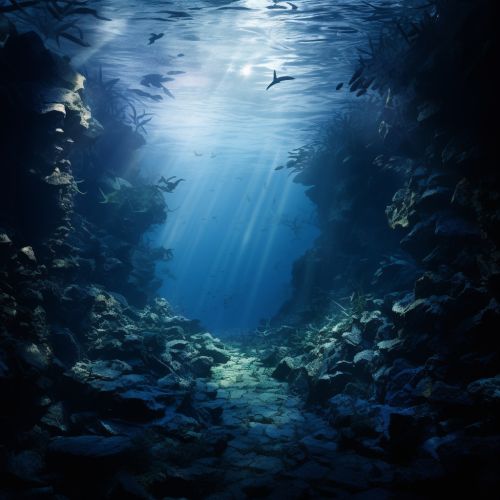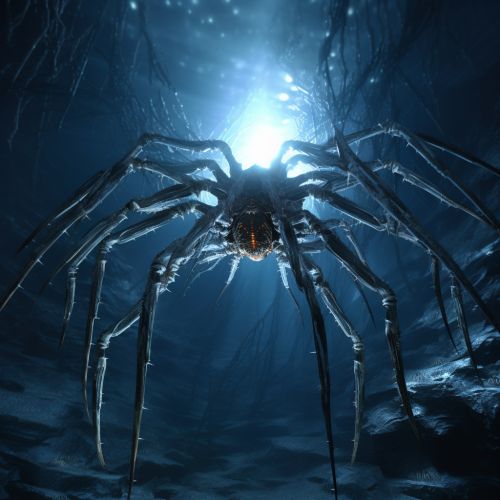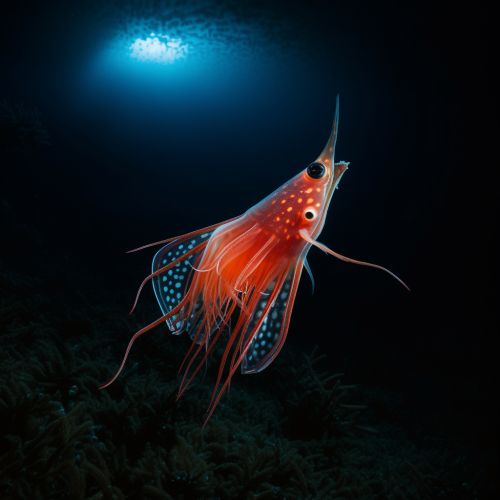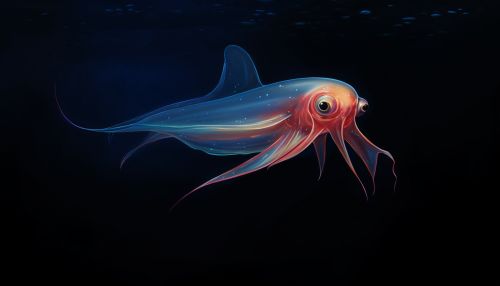The Biological Mechanisms of Animal Adaptation to Life in the Abyssal Zone
Introduction
The abyssal zone is a layer of the ocean that extends from 4000 to 6000 meters below the surface. It is characterized by its extreme conditions, including high pressure, low temperatures, and complete darkness. Despite these harsh conditions, a diverse array of organisms have adapted to life in the abyssal zone, exhibiting a range of biological mechanisms that allow them to survive and thrive in this extreme environment. This article will explore these mechanisms, focusing on the adaptations of various abyssal species.


Pressure Adaptations
One of the most significant challenges faced by organisms in the abyssal zone is the extreme pressure, which can reach up to 600 times the atmospheric pressure at sea level. To withstand these pressures, abyssal organisms have evolved various adaptations. For example, many abyssal organisms, such as the giant tube worm, lack gas-filled spaces like swim bladders, which would be crushed under the immense pressure. Instead, these organisms have solid bodies filled with water, which is incompressible and thus able to withstand high pressures.
Temperature Adaptations
The abyssal zone is also characterized by its low temperatures, which can drop to near freezing. To cope with these cold conditions, abyssal organisms have developed a number of adaptations. For instance, many abyssal species, such as the sea spider, have evolved to have a slow metabolism, which allows them to conserve energy in the cold, nutrient-poor environment. Additionally, some abyssal organisms produce antifreeze proteins to prevent their bodily fluids from freezing.


Light and Vision Adaptations
The abyssal zone is a region of perpetual darkness, with no sunlight penetrating its depths. As a result, many abyssal organisms have developed adaptations related to light and vision. Some species, such as the anglerfish, have evolved to produce their own light through a process known as bioluminescence. This light can be used for various purposes, including attracting prey and communicating with potential mates. Other abyssal organisms, such as the gulper eel, have large, sensitive eyes that are adapted to detect the faintest traces of light in the abyssal zone.
Nutrient Acquisition Adaptations
The abyssal zone is a nutrient-poor environment, with little food available. To survive in this environment, abyssal organisms have developed a variety of adaptations for acquiring nutrients. For example, many abyssal species, like the giant isopod, are scavengers that feed on the remains of dead organisms that sink from the surface. Other abyssal organisms, such as the vampire squid, have long, filamentous appendages that they use to capture small particles of organic matter floating in the water.


Reproduction Adaptations
Reproduction in the abyssal zone presents its own set of challenges, due to the vast distances and low population densities. Many abyssal organisms have evolved adaptations to ensure successful reproduction. For instance, some species, like the deep-sea anglerfish, have developed unique mating strategies, where the much smaller male attaches to the female and becomes a permanent part of her body. Other abyssal organisms, such as the sea cucumber, reproduce by releasing their eggs and sperm into the water, where fertilization occurs externally.
Conclusion
The abyssal zone is one of the most extreme environments on Earth, yet a diverse array of organisms have adapted to life in this harsh habitat. Through a range of biological mechanisms, these organisms have evolved to withstand the high pressures, low temperatures, and complete darkness of the abyssal zone, as well as to acquire nutrients and reproduce in this challenging environment. These adaptations highlight the remarkable resilience and versatility of life on Earth.
